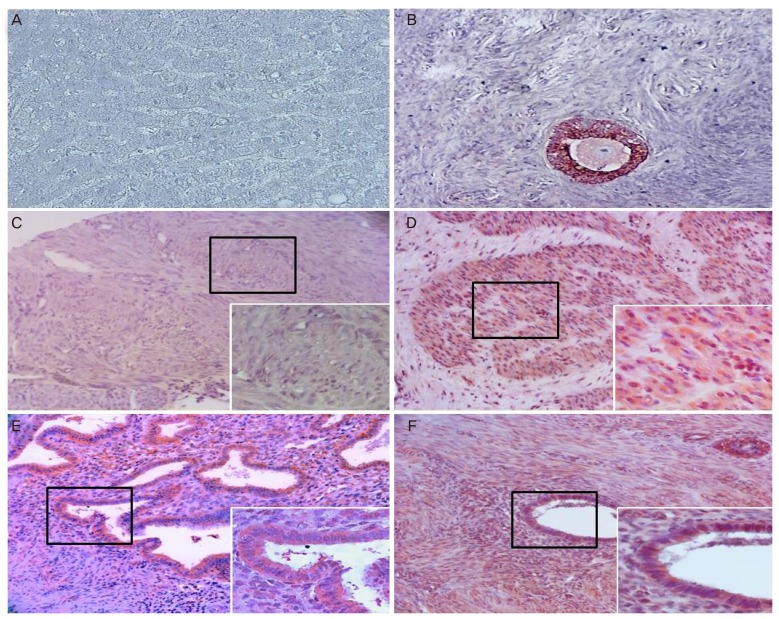1. Rey R, Lukas-Croisier C, Lasala C, Bedecarrás P. AMH/MIS: what we know already about the gene, the protein and its regulation. Mol Cell Endocrinol 2003;211:21-31. PMID:
14656472.


2. He WW, Gustafson ML, Hirobe S, Donahoe PK. Developmental expression of four novel serine/threonine kinase receptors homologous to the activin/transforming growth factor-beta type II receptor family. Dev Dyn 1993;196:133-142. PMID:
8395914.


3. MacLaughlin DT, Donahoe PK. Mullerian inhibiting substance: a potential nontoxic, naturally occurring therapeutic agent for certain human cancers. In: Jakowlew SB, editors. Transforming growth factor-β in cancer therapy: volume I basic and clinical biology. Totowa (NJ): Humana Press; 2008. p. 333-353.
4. Kim JH. Müllerian inhibiting substance: physiology and clinical applications. J Womens Med 2009;2:45-47.
5. Lee HB, Jung YJ, Kim MJ, Cho HH, Kim MR, Kim EJ, et al. Expression of Müllerian Inhibiting Substance (MIS) and its receptor in female genital tract. World J Pathol 2013;2:14-24.
6. Fanchin R, Taieb J, Lozano DH, Ducot B, Frydman R, Bouyer J. High reproducibility of serum anti-Mullerian hormone measurements suggests a multi-staged follicular secretion and strengthens its role in the assessment of ovarian follicular status. Hum Reprod 2005;20:923-927. PMID:
15640257.


7. Hudson PL, Dougas I, Donahoe PK, Cate RL, Epstein J, Pepinsky RB, et al. An immunoassay to detect human müllerian inhibiting substance in males and females during normal development. J Clin Endocrinol Metab 1990;70:16-22. PMID:
2294129.


8. Lee MM, Donahoe PK, Hasegawa T, Silverman B, Crist GB, Best S, et al. Mullerian inhibiting substance in humans: normal levels from infancy to adulthood. J Clin Endocrinol Metab 1996;81:571-576. PMID:
8636269.


9. Chin TW, Parry RL, Donahoe PK. Human müllerian inhibiting substance inhibits tumor growth
in vitro and
in vivo
. Cancer Res 1991;51:2101-2106. PMID:
2009529.

10. Fuller AF Jr, Krane IM, Budzik GP, Donahoe PK. Mullerian inhibiting substance reduction of colony growth of human gynecologic cancers in a stem cell assay. Gynecol Oncol 1985;22:135-148. PMID:
3932140.


11. Kim JH, MacLaughlin DT, Donahoe PK. Müllerian inhibiting substance/anti-Müllerian hormone: a novel treatment for gynecologic tumors. Obstet Gynecol Sci 2014;57:343-357. PMID:
25264524.



12. Stephen AE, Pearsall LA, Christian BP, Donahoe PK, Vacanti JP, MacLaughlin DT. Highly purified müllerian inhibiting substance inhibits human ovarian cancer
in vivo
. Clin Cancer Res 2002;8:2640-2646. PMID:
12171896.

13. Park SH, Chung YJ, Song JY, Kim SI, Pépin D, MacLaughlin DT, et al. Müllerian inhibiting substance inhibits an ovarian cancer cell line via β-catenin interacting protein deregulation of the Wnt signal pathway. Int J Oncol 2017;50:1022-1028. PMID:
28197641.


14. Masiakos PT, MacLaughlin DT, Maheswaran S, Teixeira J, Fuller AF Jr, Shah PC, et al. Human ovarian cancer, cell lines, and primary ascites cells express the human Mullerian inhibiting substance (MIS) type II receptor, bind, and are responsive to MIS. Clin Cancer Res 1999;5:3488-3499. PMID:
10589763.

15. Ha TU, Segev DL, Barbie D, Masiakos PT, Tran TT, Dombkowski D, et al. Mullerian inhibiting substance inhibits ovarian cell growth through an Rb-independent mechanism. J Biol Chem 2000;275:37101-37109. PMID:
10958795.


16. Song JY, Chen KY, Kim SY, Kim MR, Ryu KS, Cha JH, et al. The expression of Müllerian inhibiting substance/anti-Müllerian hormone type II receptor protein and mRNA in benign, borderline and malignant ovarian neoplasia. Int J Oncol 2009;34:1583-1591. PMID:
19424576.

17. Nam SW, Jo YS, Eun JW, Song JY, Ryu KS, Lee JY, et al. Identification of large-scale characteristic genes of Müllerian inhibiting substance in human ovarian cancer cells. Int J Mol Med 2009;23:589-596. PMID:
19360316.

18. Wang JJ, Roffler SR, Chou HH, Yin FY, Yin CS. Characterization of mullerian inhibiting substance binding on cervical carcinoma cells demonstrated by immunocytochemistry. Tissue Cell 1994;26:467-476. PMID:
8073421.


19. Song JY, Jo HH, Kim MR, Lew YO, Ryu KS, Cha JH, et al. Expression of Müllerian inhibiting substance type II receptor and antiproliferative effects of MIS on human cervical cancer. Int J Oncol 2012;40:2013-2021. PMID:
22344630.


20. Hwang SJ, Suh MJ, Yoon JH, Kim MR, Ryu KS, Nam SW, et al. Identification of characteristic molecular signature of Müllerian inhibiting substance in human HPV-related cervical cancer cells. Int J Oncol 2011;39:811-820. PMID:
21573503.


21. Barbie TU, Barbie DA, MacLaughlin DT, Maheswaran S, Donahoe PK. Mullerian Inhibiting Substance inhibits cervical cancer cell growth via a pathway involving p130 and p107. Proc Natl Acad Sci USA 2003;100:15601-15606. PMID:
14671316.



22. Renaud EJ, MacLaughlin DT, Oliva E, Rueda BR, Donahoe PK. Endometrial cancer is a receptor-mediated target for Mullerian Inhibiting Substance. Proc Natl Acad Sci USA 2005;102:111-116. PMID:
15618407.


23. Chung YJ, Kim HJ, Park SH, Yoon JH, Kim MR, Nam SW, et al. Transcriptome analysis reveals that Müllerian inhibiting substance regulates signaling pathways that contribute to endometrial carcinogenesis. Int J Oncol 2015;46:2039-2046. PMID:
25760378.



24. Namkung J, Song JY, Jo HH, Kim MR, Lew YO, Donahoe PK, et al. Mullerian inhibiting substance induces apoptosis of human endometrial stromal cells in endometriosis. J Clin Endocrinol Metab 2012;97:3224-3230. PMID:
22761458.



25. Parker WH. Etiology, symptomatology, and diagnosis of uterine myomas. Fertil Steril 2007;87:725-736. PMID:
17430732.


26. Bulun SE. Uterine fibroids. N Engl J Med 2013;369:1344-1355. PMID:
24088094.


27. Yen CF, Huang SJ, Lee CL, Wang HS, Liao SK. Molecular characteristics of the endometrium in uterine adenomyosis and its biochemical microenvironment. Reprod Sci 2017;24:1346-1361. PMID:
28183227.


28. Pérez-López FR, Ornat L, Ceausu I, Depypere H, Erel CT, Lambrinoudaki I, et al. EMAS position statement: management of uterine fibroids. Maturitas 2014;79:106-116. PMID:
24975954.


29. Vilos GA, Allaire C, Laberge PY, Leyland N, Vilos AG, Murji A, et al. The management of uterine leiomyomas. J Obstet Gynaecol Can 2015;37:157-178. PMID:
25767949.


30. Farquhar C, Brosens I. Medical and surgical management of adenomyosis. Best Pract Res Clin Obstet Gynaecol 2006;20:603-616. PMID:
16563872.




























